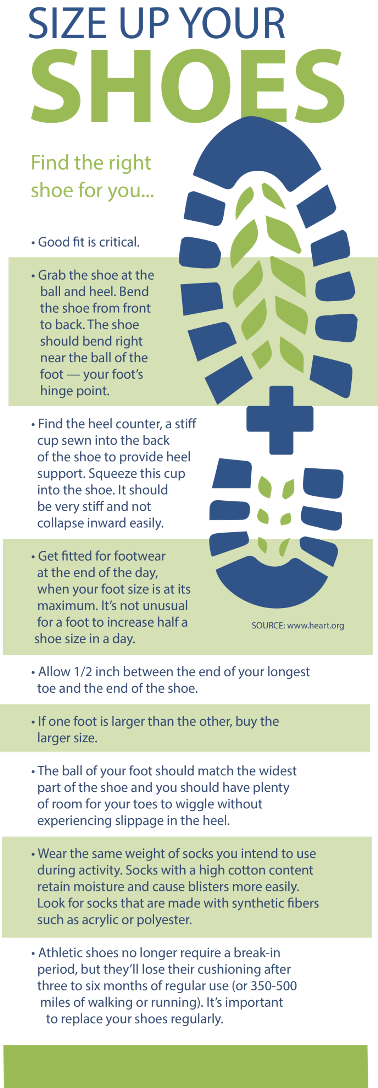Whether You Are Running a Marathon or Doing Squats, Check Out These Tips That Will Make Your Toes Happy – and Maybe Prevent an Injury.
 Fitness gear has become a big business, with tons of brands vying for your attention and touting that they are the best choice out there. But, is any of the hype true? Can one shoe really make you jump higher while another helps you run faster? And, if so, can a shoe really tone your tush and sculpt your legs as you grocery shop? If only!
Fitness gear has become a big business, with tons of brands vying for your attention and touting that they are the best choice out there. But, is any of the hype true? Can one shoe really make you jump higher while another helps you run faster? And, if so, can a shoe really tone your tush and sculpt your legs as you grocery shop? If only!
With all of these promises, it’s no wonder prices for athletic footwear prices have skyrocketed. So, here you are, standing in the footwear department of your local retail store. What now?
Follow these guidelines from the American Heart Association to get the right shoes that fit in your budget.
KNOW WHAT YOU NEED
Remember, a high price tag doesn’t always mean it is the perfect shoe for your foot or the activity you are planning to do. Know what you plan to do and ask a knowledgeable sales representative to help. If you are planning to do some running and weight training, they can likely help you find a cross-training shoe that will fit your needs.
Every shoe fits, feels and performs differently. You should try each pair on and simulate the motion you will be doing. If you jog in place and the heel rubs or you feel wobbly, those are probably not the running shoes for you. Athletic shoes don’t need to be broken in, so what you feel in the store is what you’ll get.
Sticker shock is a common occurrence when shopping for athletic shoes, with brand name shoes costing hundreds of dollars. If you are not tied to a specific brand, aim for a middle of the price range shoe that feels great and does what you need it to do. So, find a shoe with excellent support, cushioning and fits well that you like — that may be enough to get you motivated to slip them on and get moving.
WHAT WILL YOU BE DOING
Does it really matter what you will be doing in the shoes? For moderate use, maybe not but keep in mind different types of shoes offer different features for extra comfort and to help prevent injury.
- Walking shoes should be lightweight and breathable. The cushioning should be thickest in the heel and the shoe should be flexible enough to bend.
- Running shoes provide extra cushioning and flexibility, but the thicker treads could cause you to trip.
- Cross-trainers are multi-purpose shoes if you want to combine several activities like walking, tennis and weight training in one workout.
KNOW YOUR TYPE
Everyone’s foot is unique — and sometimes your own two feet are even different. Knowing what type of foot you have can help you make a smart shoe choice. For example, people with high arches may require a shoe with more shock absorption while someone with flat feet will need more support and heel control.
Getting a good fit is critical, so no matter what the commercials or your running buddy say is the best, find the best shoe for you.
DO I NEED TO REPLACE MY SHOES?
Is it OK to wear the shoes I love until they literally fall apart? Experts say no as your shoes offer protection against potential injury. The American Heart Association advises replacing athletic shoes after three to six months of regular use (or about 350-500 miles of walking or running). If they’re no longer absorbing the pounding and jarring when you run, walk or whatever, you’re more likely to sustain knee and ankle injuries.
Shop around and ask for help from a knowledgeable store clerk to help you find the right shoe for you. And, of course, make sure to put your shoes to good use. Lace them up and get moving!
